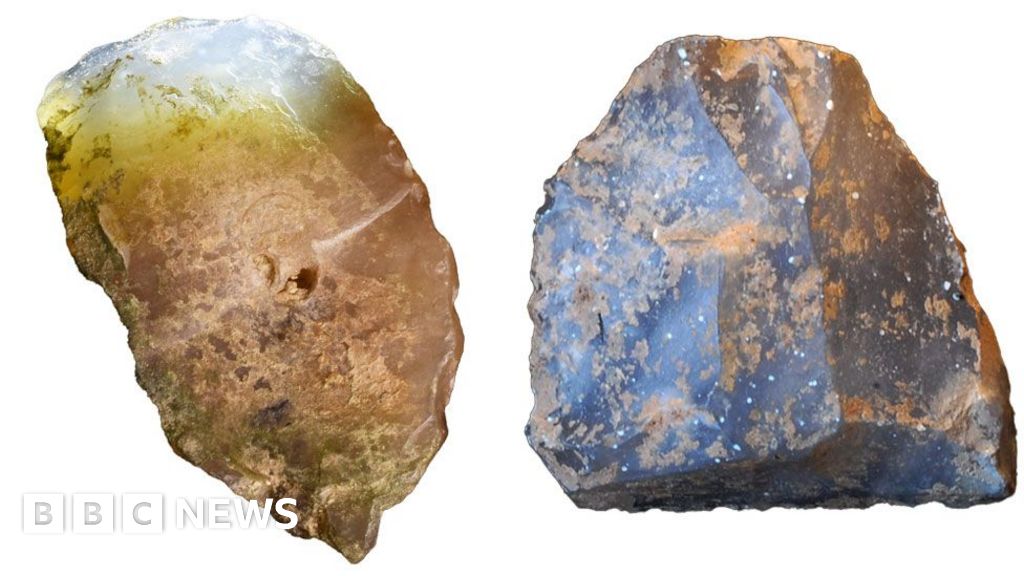A groundbreaking archaeological discovery in northwest Kenya is reshaping our understanding of early human evolution by revealing that the very first humans may have been inventors, using stone tools continuously for hundreds of thousands of years. At the heart of this discovery is the Namorotukunan site in East Turkana, where researchers have uncovered evidence that primitive humans living around 2.75 million years ago consistently made and used stone tools over a period of 300,000 years. This challenges the long-held belief that early tool use was sporadic, random, and quickly abandoned.
Previously, scientists thought that early humans might have experimented with tool use only occasionally, with little continuity or passing down of technology between generations. However, the Namorotukunan findings, published in the journal Nature Communications and led by Prof. David Braun of George Washington University, provide strong evidence that tool-making was a stable, long-lasting tradition that spanned thousands of human generations. “We thought that tool use could have been a flash in the pan and then disappeared. When we see 300,000 years of the same thing, that's just not possible,” Prof. Braun explained. “This is a long continuity of behaviour. That tool use in humans and their ancestors is probably much earlier and more continuous than we thought.”
Over a decade of meticulous excavation at Namorotukunan has revealed approximately 1,300 stone artifacts, including sharp flakes, hammerstones, and cores, all crafted by carefully striking rocks collected from nearby riverbeds. These tools were made using what is known as the Oldowan technique—the earliest widespread stone tool technology known to humanity. The presence of the same style of tools in three distinct geological layers, each representing different time periods, confirms the continuity of tool use across hundreds of thousands of years.
One of the striking features of the stone tools is the deliberate selection of high-quality rocks, suggesting the toolmakers possessed considerable skill and knowledge. Dr. Dan Palcu Rolier, a senior geoscientist from the University of São Paulo who was part of the research team, commented on the sophistication of these early humans. “These guys were extremely astute geologists. They knew how to find the best raw materials, and these stone tools are exceptional. Basically, we can cut our fingers with some of them,” he said. This level of craftsmanship indicates not only technical ability but also an understanding of the materials and their properties, pointing to a thoughtful and deliberate approach to tool-making.
The discovery also sheds light on how early humans adapted to dramatic environmental changes using technology rather than biological evolution. Around the time these tools were in use, the East Turkana region experienced significant shifts in climate and landscape, transitioning from lush wetlands to arid, fire-prone grasslands and semi-deserts. Rahab N. Kinyanjui, a senior scientist at the National Museums of Kenya, highlighted the challenges posed by these sharp environmental changes. Typically, animal populations might respond to such changes by evolving new physical traits or migrating to more hospitable areas. However, the tool-using humans at Namorotukunan managed to thrive amid these challenges by leveraging their technology.
Dr. Palcu Rolier emphasized that these early inhabitants adapted not by altering their bodies but by changing their behavior and technology. “Technology enabled these early inhabitants of East Turkana to survive in a rapidly changing landscape—not by adapting themselves biologically, but adapting their ways of finding food,” he explained. The stone tools allowed them to exploit a wider range of resources, including meat from animal carcasses and edible plants, which would have been crucial for survival as their environment transformed.
This relationship between tool use and survival is supported by evidence found at the site. Animal bones displaying cut marks and breakage patterns consistent with stone tool use indicate that these humans regularly accessed meat as part of their diet. This consistent use of tools to process food over hundreds of thousands of years suggests that technology provided a significant survival advantage. By allowing early humans to access diverse food sources, tool use helped them overcome ecological challenges and maintain a stable food supply despite environmental fluctuations.
The humans who occupied the Namorotukunan site around 2.75 million years ago were among the earliest members of our lineage, characterized by relatively small brains. They likely lived alongside their evolutionary ancestors, such as australopithecines—pre-human hominins with larger teeth and a blend of chimpanzee and human traits. It remains uncertain whether the tool users belonged to one or both

